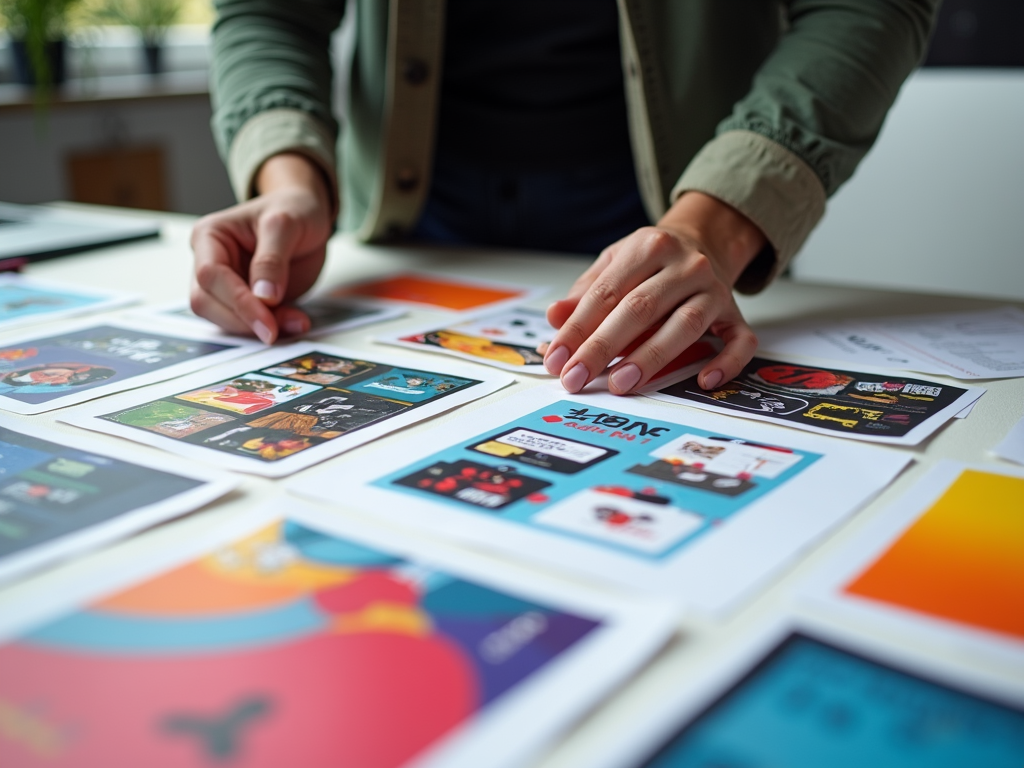What’s the first thing people notice when they walk by a shop, glance at a flyer, or open a piece of direct mail?
It’s not the product. It’s not the service. It’s the design.
Whether it’s bold colors, striking imagery, or a logo that lingers in the mind, creative print is often a brand’s first handshake with its audience. And just like any first impression, you only get one shot to make it count.
Why Print Still Matters
Digital may dominate, but print hasn’t lost its place; it’s just evolved. Physical, well-crafted printed materials bring a level of trust and professionalism that screens can’t always replicate. When people can touch, hold, and see something in the real world, it makes the brand feel more grounded. More credible.
That’s especially important in a world where digital ads are skipped, scrolled past, or blocked altogether.
Print, on the other hand, has staying power. A beautiful postcard can sit on a desk for weeks. A striking poster can live on a wall for months. A clever brochure can be passed from one person to another. And each time, your brand gets another moment to shine.
Where Creativity Meets Strategy
Design isn’t just about making something look nice. It’s about making it work. The smartest brands use creative print to do more than grab attention; they use it to communicate their identity, values, and voice at a glance.
Consider how color choices influence perception. Or how typography can make something feel bold, elegant, or playful. Every detail matters—layout, spacing, finishes—they all shape how your brand is seen.
That same thinking applies across formats, too. Vinyl sign printing, for example, isn’t just functional. It’s an opportunity to create a visual representation that reflects your brand’s personality. With the right design, a sign becomes more than a name on a wall; it becomes part of the experience.
The Power of Physical Connection
There’s something visceral about print. You can feel the texture of high-quality paper. You can see the richness of ink, the gloss of a finish, or the weight of a well-bound catalog. These are subtle cues, but they all contribute to building trust.
Psychologically, people associate tangibility with legitimacy. If someone’s gone to the effort of printing something that looks and feels premium, it sends a clear message: they’re serious about their business. That perception matters.
It’s also worth noting that print doesn’t get lost in the noise. Your inbox might be overflowing, but your mailbox? Far less crowded. That means well-designed printed material can stand out in a way digital never will.
Key Formats That Make an Impact
There’s no one-size-fits-all in print. The most effective formats depend on your audience and your message. But a few tried-and-true options consistently get results:
- Brochures – A compact way to tell your brand story and showcase services or products
- Postcards – Direct, visual, and easy to digest, perfect for promotions or announcements
- Business cards – Still powerful when done well; a tactile reminder of who you are
- Flyers – Ideal for high-impact, short-form messaging in local settings
- Signage – From storefronts to event backdrops, signs do heavy lifting for visibility
Each of these can be tailored to suit your brand’s look and tone. With the right design, even the smallest printed piece can pack a punch.
Common Pitfalls to Avoid
Not all print is effective. Poor design, cheap materials, or unclear messaging can actually hurt your brand more than help it. To avoid falling flat:
- Don’t overload with text – Keep it clean, readable, and purposeful
- Choose colors carefully – They should align with your brand, not clash with it
- Use high-resolution images – Blurry visuals suggest a lack of professionalism
- Think about the paper – Finish and weight make a difference in perceived quality
- Be consistent – Fonts, logos, and colors should align across all your materials
These may sound obvious, but they’re easy to overlook when rushing to meet a deadline or cut corners on cost. Taking the time to get it right makes all the difference.
Merging Print with the Digital World
Just because print is physical doesn’t mean it’s old-fashioned. Many successful brands are finding smart ways to blend print and digital for a more cohesive experience.
QR codes are one example. They let people jump from your print material straight to your website or product page. That creates a seamless journey—from interest to action—with just one scan.
Even using social media handles or campaign hashtags in printed materials can create connection points. It’s all about meeting your audience where they are and making it easy for them to take the next step.
Make Your Brand Unforgettable
Think about the printed materials you’ve kept over time. Maybe it was a menu from a favorite takeout spot, a flyer from a cool event, or packaging so well-designed you didn’t want to throw it away. That’s what creative print can do; it makes your brand memorable.
And that’s the goal, right? Not just to be seen, but to be remembered.
Good branding doesn’t have to shout. Sometimes, it just needs to show up in the right way. Printed materials give you the chance to do just that—quietly, consistently, and with style.
When done well, print doesn’t just complement your branding. It becomes part of how people experience your business in the real world. And that kind of connection sticks.

